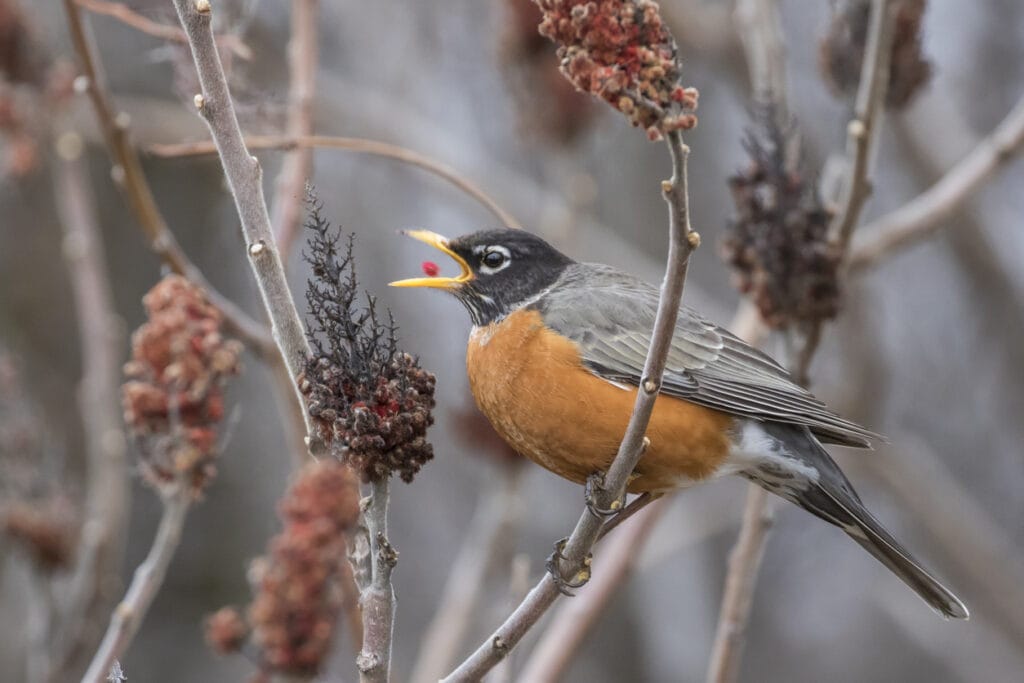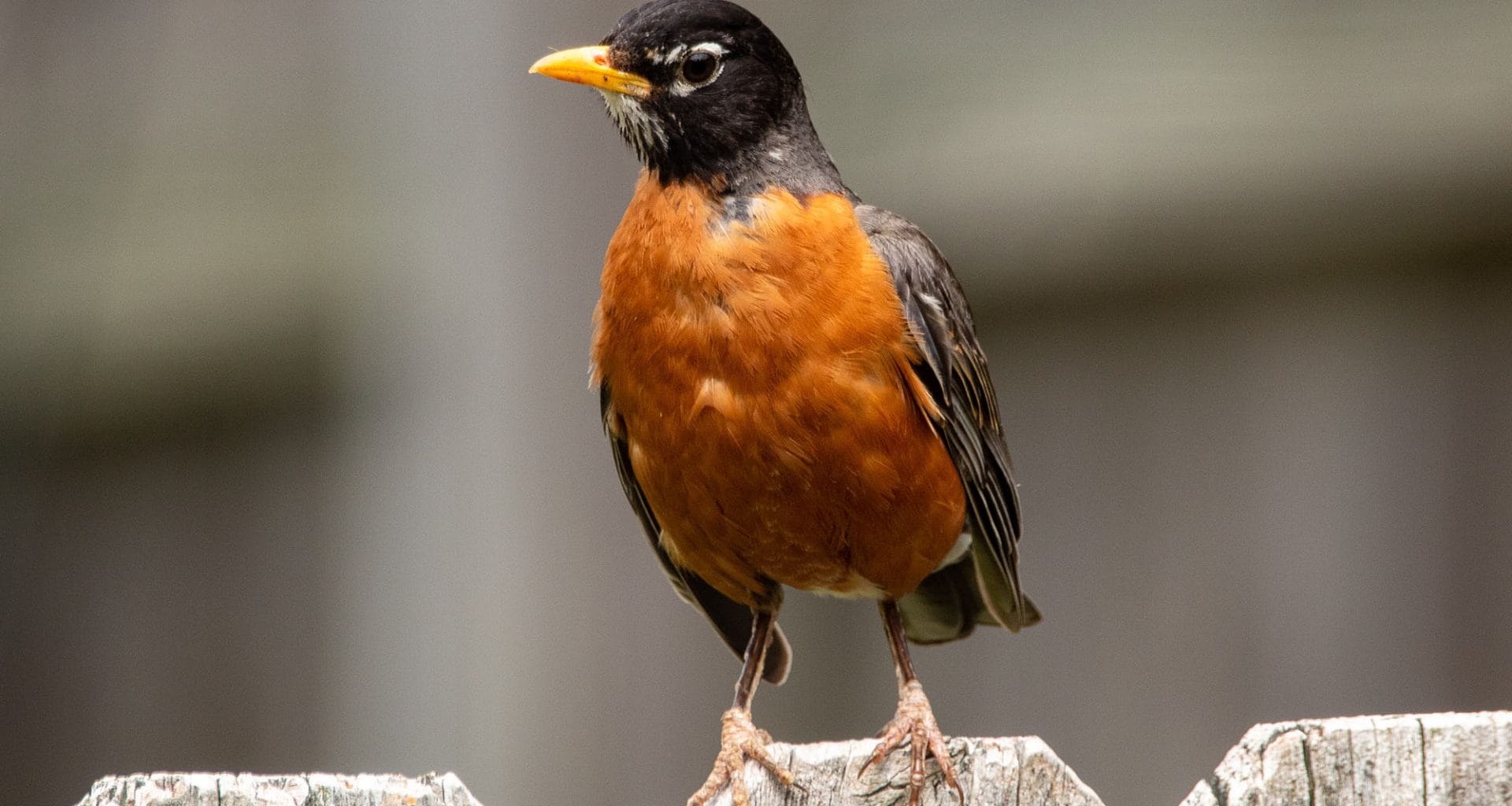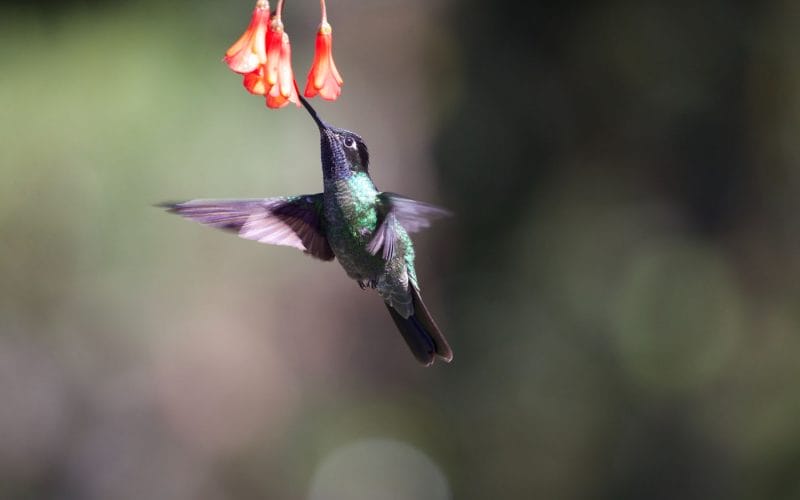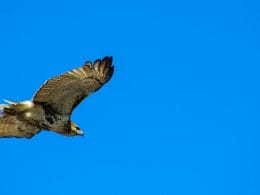Robins are fearless little birds. This is evident from just how close they will perch to humans. If you want to hand feed birds in your garden, robins are great birds to start with. Their bravery makes it easy to build a trusting relationship. But do you know the steps for hand feeding robins?
Glad you asked! In this article, we’ll go over exactly how to hand feed a robin as well as best practices for hand feeding robins.
The fact that wild robins can be hand-fed just goes to prove their bravery further. Remember, bravery is the ability to act despite your fear. The objective with hand-feeding is to build trust and eliminate fear altogether.
Hand Feeding Robins: Beginners Guide
As we know, birdwatching requires patience, quiet, and stillness. Giving a robin the confidence to eat from your outstretched hand requires almost exactly the same skillset. Quiet, stillness, and patience is essential, but you need to be confident too.
Step 1
The first step to building a relationship with a robin is to pick his favorite food; live mealworms. You probably have a bird feeder in your yard, which has attracted a robin already. Screw a small plastic container to your bird table. This will stop the worms from crawling off and falling to the floor.
Author Note: Monitor how quickly the food you set out disappears. Once you have ascertained the daily intake, set out only enough food for one day. Then set up a schedule that allows you to refill the feeder every morning. This repetition allows the robin to recognize and expect the routine.
Step 2
After a day or two, you will notice your robin perched on a nearby branch, waiting for you to set out his breakfast. This is the time to change things up a bit. Instead of refilling the feeder fully, set out only one or two mealworms and keep the rest in your hand.
Take up a position close to the feeder but also close to an escape route for the robin. Under a tree is perfect. Failing that, stand close to bushes or shrubs. If you have a bench, you can sit on it. It will make the whole process more comfortable for you. This is a crucial step in hand feeding robins.
Step 3
When the robin flies to the feeder, he will be looking about for the rest of his meal. Hold your hand out low so he can see you displaying the mealworms clearly. Slowly throw a few mealworms on the ground close to the feeder and then closer to yourself.
Be careful not to throw the food too close to the robin as it may spook him. They have great eyesight and should easily spot the tasty morsels on the floor. As he comes closer, be sure to move slowly and stay quiet. Startling the bird at this point could make things much more difficult in the future.

Step 4
Squat down and place a few mealworms two or three feet from yourself or on the other end of your bench. You may need to repeat this process for a few days before he trusts you enough to take food from your hand.
Soon he will be sitting on your fingertips and munching away happily. But it could be a few more days before you can move your hand towards him with a worm between your fingers. After a while, you can expect him to be sitting impatiently at your door. Sometimes he might even chirp as if to chastise your tardiness.
After building a relationship with a robin, people have found some even bring their mate around. Once you have a firm friendship, you may find that your new wingman is happy to sit on your shoulder. He may even enjoy the perch as you walk around the garden, as long as you give him a snack every now and then. Now you have successfully learned the trick to hand feeding robins.
Introducing a Robin to Your Friends
Robins are clever and recognize human faces. There is research that shows birds can even recognize human voices too. If you have successfully built a relationship with a robin, you may still be wary of meeting new people.
Just like any other introduction, you are the one who holds the trust of two strangers. There is an amount of that trust that is imparted through an introduction, which allows relationships to build more quickly. But if your friend breaks the trust, that will impact your relationship too.
Do not try to introduce new people until you and the robin are good friends. You should be able to move your hand slowly while the robin is perching on it. He should trust you enough that you can place a morsel in his beak without feeling threatened by your approaching hand.
Author Note: Go through your normal routine with your friend a few steps behind. Give your friend the lion’s share of the mealworms keeping just a few for yourself. Show the robin the food in your hand so he can come and eat, but don’t fully extend your arm.
As he is perching on your fingers, have your friend approach slowly from one side. Make sure their arm is outstretched, and their hand is open. Their hand must be lower down than yours so that the robin can see the larger meal clearly. Stop two or three feet away.
An approaching hand above the robin will make him feel threatened. If the robin is hesitant, slowly move your hand closer to theirs. This shows the robin that you trust your friend because you are moving closer, not the other way around.
What Do Robins Eat?
Robins can eat seeds to survive, but they prefer fresh fruit, earthworms, invertebrates, and other insects. In the wild, they prefer the high sugar of fruit and berries when they are plentiful. The protein from live insects and earthworms in spring and summer also supplements the diet of the young.
Wild nuts and seeds remain a viable food source for longer, and robins rely on them later in the year. These proteins provide a high amount of fat for insulating through cold winters. Robins, however, have shown that they prefer the flavor of suet and mealworms for this nutrition.
Acting on this information will help to draw robins to your feeding station.
Attracting Robins into Your Yard

A novel alternative that some people are taking to having a bird table or feeder is feeding ‘tree.’ This is usually a small eight to ten-foot-tall tree. Nail 20 or 30 short wire nails to the branches of the tree.
Ensure there is a minimum of six inches between the nails to allow the birds to perch comfortably. Leave a short length of each nail sticking out of the wood. These you can use as a butcher’s hook for the birds.
At any time of year, slices of apple or berries served up like this are sure to draw robins. You will need to watch out for this fruit going moldy in summer and change it out daily. In winter, the fruit will last much longer.
Dried mealworms can also be used on a feeding tree; these are better in cold or dry conditions. Rain and warm temperatures will cause dried mealworms to rot. Another great source of the vital fat and sugar that robins love is fruit suet. It is the perfect combination to sustain them through cold winters.
In the cold, the body uses more calories just to stay warm. Under the right circumstances, birds will visit a feeder in preference to searching for natural sources of food. They know that there is more food at a feeder than the wild can provide in the same given area.
Eating at a feeder means less effort is involved in the search for food and fewer calories used. Location is essential, but even more salient is stocking the feeder with the right fare. As long as you have robins in your area, a well-stocked bird table should maintain their interest.
Robins are territorial over their food supply. They will fight rival robins and other small bird species for the rights to a prime feeding table. Keep this in mind when hand feeding. If other birds are in the area, you could find yourself with a ringside seat.
Where Do Robins Live?
Robins are charming little songbirds that are found throughout Alaska, Canada, and the USA. There are European species, but they are a much lighter brown on their back with shorter tails.
Robins will migrate from the extreme north to escape the worst of the winter. But they still thrive in cold climates, and as such, commonly adorn Christmas cards.
A robin’s territory can range from one up to about five square miles. Territories in urban areas are generally smaller. There are often a number of bird feeders in urban areas which are kept stocked by humans. This means that there is plenty of food to sustain them in a smaller area.
Author Note: Natural sources of food are generally more scarce, especially in winter. To ensure that there is enough to eat, rural-dwelling robins maintain larger territories.
On the topic of ensuring there is enough to eat…
Another interesting fact about robins is that they become less territorial in late fall and early winter. This may be due to migratory instinct, but only a tiny proportion of robins migrate. It almost seems as if they understand the hardships of winter. To make life easier, they relax their border patrols and share food sources to ensure the survival of the species.
Robin Behaviors

Robins are brave and show their heart in defense of their territory and favored feeding locations. During breeding seasons, adults can go so far as diving at their natural predators in defense of the nest.
Robins have a bit of a coarse reputation among other birds. They will trespass and poach in a rival territory which incites conflict with the neighbors. These fights are not only among their kind, though. Robins will also attack other species of birds at a feeder, which they have ‘claimed.’
Robins are beloved visitors to winter gardens, sweetening the frosty air with their sanguine melodies. These songs are repeated throughout the territory all day as a warning to other males to stay away. The nesting territory of a male robin is his most prized asset, and he will fight for it.
Robins are well known for sitting on the handle of a gardener’s fork or spade as they work. Testament to the confidence in their ability to evade danger. They use this temporary perch to spot tasty snacks that the gardener digs up. Swooping down to snatch up earthworms from the freshly turned soil.
Conclusion
Robins are easily recognized by their bright redbreast. However, the coloring of their plumage is uncommon among birds. Female robins are almost as brightly colored as males. In fact, differentiating the females shows that the redbreast extends further down the chest.
The males generally have a starker contrast in their coloring. The males show darker, almost black backs and a darker red on the breast than the females.
We hope you enjoyed this article on hand feeding robins.
Fly high friends!










